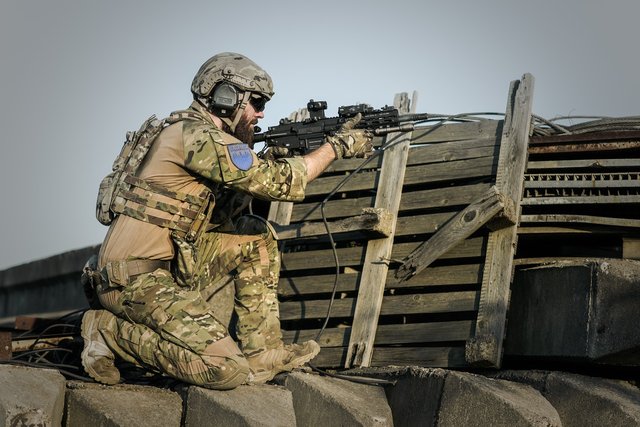The army wants to read in the brains of its soldiers...

The army wants to read in the brains of its soldiers...
By constantly analyzing the brain activity of each soldier, the U. S. Army hopes to obtain a more accurate picture of the battlefields and a better estimate of the state of its troops.
This strange innovation could also have civil applications...
Darpa's Defense Advanced Research Projects Agency (AugCog), the U. S. Army's research and development agency, has commissioned eleven academic and industrial partners to expand the ability of individuals to process information.
Last November, we learned about the Honeywell Image Triage System (HITS) project.
Its objective:
multiply the speed of image processing by six times faster by military analysts using sensors that assess soldiers' brain activity to identify the most interesting areas in the images.
The system, which combines an electrocardiogram, encephalogram and brain-computer interface, can also provide a wireless visual representation of soldiers' capabilities to command: health, physical and emotional condition, environmental conditions, fatigue, distraction, information overload, etc. The system can also be used wirelessly to provide commanders with a visual representation of soldiers' capabilities.
Too much information for a soldier?
The objective is to adjust the information sent to it according to these capabilities, and to determine which signals (audio, visual, tactile) it integrates the fastest, and at best.
But AugCog also aims to enable officers to select those who are physically and mentally fit, those who can gather even more information and stress, and identify those who need to be removed or repatriated.
The problem,"says one of the project's participants," is that soldiers are already under a lot of stress when they're in combat, and it's not going to get any better when we bombard them with information about enemy positions, weather, weapons systems and mission plans.
Honeywell likes to point out that it has long experience in human factor assessment, and that its innovations could also be used for medical or spatial applications, among other commercial activities.
It's hard to imagine what this would mean in terms of school exams, job interviews, employee performance measurement or the fight against unemployment?